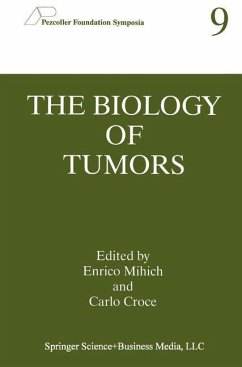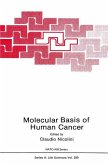Proceedings of the Ninth Annual Pezcoller Symposium held in Rovereto, Italy, June 4-7, 1997.
The Ninth Annual Pezcoller Symposium entitled "The Biology of Tumors" was held in Rovereto, Italy, June 4-7, 1997. It focused on the genetic mechanisms underlying het erogeneity of tumor cell populations and tumor cell differentiation, on interactions be tween tumor cells and cells of host defenses, and the mechanisms of angiogenesis. With presentations at the cutting edge of progress and stimulating discussions, this symposium addressed issues related to phenomena concerned with cell regulation and cell interactions as determined by activated genes through the appropriate and timely media tion of gene products. Important methodologies that would allow scientists to measure dif ferentially genes and gene products and thus validate many of the mechanisms of control currently proposed were considered, as were the molecular basis of tumor recognition by the immune system, interactions between cells and molecular mechanisms of cell regula tion as they are affected by or implemented through these interactions. The molecular and cellular mechanisms of tumor vascularization were also discussed. It was recognized that angiogenesis provides a potential site of therapeutic intervention and this makes it even more important to understand the mechanisms underlying it. We wish to thank the participants in the symposium for their substantial contribu tions and their participation in the spirited discussions that followed. We would also like to thank Drs.
The Ninth Annual Pezcoller Symposium entitled "The Biology of Tumors" was held in Rovereto, Italy, June 4-7, 1997. It focused on the genetic mechanisms underlying het erogeneity of tumor cell populations and tumor cell differentiation, on interactions be tween tumor cells and cells of host defenses, and the mechanisms of angiogenesis. With presentations at the cutting edge of progress and stimulating discussions, this symposium addressed issues related to phenomena concerned with cell regulation and cell interactions as determined by activated genes through the appropriate and timely media tion of gene products. Important methodologies that would allow scientists to measure dif ferentially genes and gene products and thus validate many of the mechanisms of control currently proposed were considered, as were the molecular basis of tumor recognition by the immune system, interactions between cells and molecular mechanisms of cell regula tion as they are affected by or implemented through these interactions. The molecular and cellular mechanisms of tumor vascularization were also discussed. It was recognized that angiogenesis provides a potential site of therapeutic intervention and this makes it even more important to understand the mechanisms underlying it. We wish to thank the participants in the symposium for their substantial contribu tions and their participation in the spirited discussions that followed. We would also like to thank Drs.








